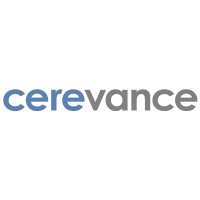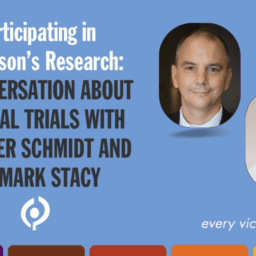The discovery of Levodopa’s effectiveness in treating Parkinson’s motor symptoms was a breakthrough in Parkinson’s care and modern medicine. Since this finding more than 50 years ago, most pharmacological approaches to treating Parkinson’s have targeted the brain’s dopamine system.
Despite years of research in new dopaminergic drugs, levodopa (L-dopa) remains the most effective treatment for Parkinson’s. However, long term use of L-dopa often leads to motor complications such as ON-OFF fluctuations and dyskinesia, as well as non-motor complications like impulsivity, obsessive-compulsive symptoms, and hallucinations. As a result, some researchers have begun to focus attention on alternative pathways to treat Parkinson’s without complications associated with L-dopa.
One example of progress being made through this approach is that Cerevance has identified a novel non-dopaminergic target, GPR6, and developed a new compound, CVN424, which promises to improve both motor and non-motor symptoms of Parkinson’s.
CVN424 is an oral drug that has been tested in one study involving healthy volunteers and another study involving individuals with advanced Parkinson’s. In these studies, the drug appeared to be well-tolerated and safe; it also significantly improved OFF-time compared to placebo.
In October 2023, Cerevance launched the ASCEND clinical trial. This new trial explores use of CVN424 as a monotherapy for people living with early, untreated Parkinson’s. To watch a video interview about this new trial, click here.
CVN424 Mechanism of Action
To understand why researchers believe that CVN424 will improve Parkinson’s motor and non-motor symptoms, it’s important to briefly discuss the basal ganglia and their circuits.
The basal ganglia are a group of brain structures that control the flow of information from the frontal cortex to other parts of the brain and the spinal cord to modulate motor function, cognition (e.g., attention, thinking, planning, memory), and mood/behavior (e.g., motivation, interest, etc.).
These functions of the basal ganglia are regulated by two pathways: the indirect and the direct pathway. The first one works like a brake, while the second is akin to an accelerator.
In people with Parkinson’s, the indirect pathway—the brake—is overactive, while the direct pathway—the accelerator—is turned down. As a result of the brake’s overactivity, many brain functions are slowed, which results in the slowness of movements, thoughts, and behavior characteristic of Parkinson’s.
How is CVN424 different from existing therapies?
CVN424 is designed to selectively lower the activity of the indirect pathway, the brake, thereby restoring motor and some of the non-motor functions caused by its overactivity. Unlike L-dopa and other dopaminergic drugs, CVN424 does not affect the direct pathway, the accelerator. Because of this, it has a lower risk of causing dyskinesia and other complications of direct pathway hyperactivity, such as impulsivity, obsessive-compulsive symptoms, and hallucinations.
In addition, research suggests that GPR6, the target of CVN424, is largely present in the indirect pathway and not in other brain regions or body systems. This may contribute to better safety and tolerability of CVN424 compared to L-dopa and other dopaminergic drugs, whose targets are more widely present in the brain and body.
Summarily, CVN424 aims to restore the function of brain regions involved in Parkinson’s with lower risk of causing the adverse effects observed with L-dopa and dopaminergic drugs.
Previous Research Supporting the use of CVN424 in Parkinson’s
CVN424 has been pre-clinically studied using animal models of Parkinson’s, and in other clinical trials involving healthy individuals and people with Parkinson’s.
Preclinical Research
In a 2021 article, Sun et al. observed that CVN424 can reverse toxin-induced rigidity in rats and restore mobility in a common animal model of Parkinson’s. The authors say their findings demonstrate “inhibition of GPR6 activity in vivo normalizes activity in basal ganglia circuitry and motor behavior.”
Clinical Research
In the first human trial of CVN424 there were no serious or severe adverse events. Margolin et al., authors of the trial report, write that the study—which included healthy volunteers—demonstrated that CVN424 was “safe and well-tolerated.”
Following the success of this trial, researchers conducted a phase two study investigating CVN424 safety, tolerability, and efficacy as an add-on therapy for use with other Parkinson’s medications.
This trial involved 136 individuals with advanced Parkinson’s. Over the four-week course of the study, participants received either placebo, a daily dose of 50 mg of CVN424, or a daily dose of 150 mg of CVN424 in addition to their stable doses of anti-Parkinson’s drugs.
The results of the trial were released in early 2022. Highlights include:
- All safety-related outcomes were met.
- Participants who received 150 mg/day showed a statistically significant 1.3-hour reduction in OFF-time compared to placebo and an increase in ON-time without troublesome dyskinesia.
- Participants who received 50 mg/day showed a 0.75-hour reduction in OFF-time and an increase in ON-time without troublesome dyskinesia.
In a presentation at AD/Parkinson’s 2023, Dr. Karl Kieburtz—president of Clintrex, a company collaborating with Cerevance on the design and execution of its Parkinson’s trials—shared additional findings from this study. The results showed that participants taking 150 mg/day of CVN424, experienced improvement of daytime alertness.
Design of the CVN424-203 Monotherapy Study in Early Parkinson’s
Supported by the results mentioned above, in October 2023, Cerevance launched the CVN424-203 monotherapy study. This trial aims to determine whether CVN424 is effective in treating motor and non-motor symptoms of Parkinson’s when taken alone without other anti-Parkinson’s drugs.
The primary outcome endpoint for the trial is the change in UPDRS Part II and III (experiences of daily living and motor examination) scores from baseline visit to week 12. The study also includes other common tests to assess changes in motor and non-motor symptoms as secondary outcome endpoints.
Since this trial intends to investigate CVN424’s efficacy when administered alone, treatment with other anti-Parkinson’s medication is not allowed during the trial. Approximately 62 participants will be randomly assigned to receive either CVN424 150 mg/day or placebo for 12 weeks. At the end of the treatment period, participants will wait two weeks for complete drug wash-out and will return for the last assessment.
Visit the study’s official website for more details, including a list of locations enrolling participants in the study.
Digital Health Technology will help track response to CVN424
In an interview about this new study, Dr. Kieburtz noted that while the outcome measures are typical for this phase of trial, one reason he is excited by the new CVN424 trial is that it incorporates a variety of digital health technologies:
- Cogstate: A computer-based cognitive function assessment tool, which will measure changes in attention, memory, and ability to plan and self-control
- The Emerald Device: A device deployed in the home to gather data for evaluation of daily activities. Dr. Kieburtz says this device provides “a very rich, very precise look at speed of movement, but can also give a reflection of motivation [by showing] how much people are up and about and how often they are active versus how often they are sitting still.”
- Modality.ai: A conversational AI system, which will help evaluate a variety of aspects of Parkinson’s, from speed and volume of speech to measurements of facial expressions and eye movements
- Beacon EEG: An at-home EEG, which will be used to gather data about sleep patterns
While these technologies are not formal outcome measures to determine efficacy, they provide additional information regarding CVN424’s effect on Parkinson’s, which may help the researchers plann and design future trials.
Reasons To Participate in Clinical Research
People with Parkinson’s participate in clinical trials for many different reasons. Some common reasons include:
- Increased access to Parkinson’s experts
- A feeling of “giving back” and helping improve quality of life for others
- The opportunity to learn about cutting-edge scientific developments
- The possibility of early access to new and potentially more-effective treatment
I decided to participate in clinical trials because it was one small way I might be able to hasten finding answers to the many questions researchers are exploring.
For me, the best part of participating was meeting the people who were leading the trials and being able to talk with them and get some of my questions answered, as well as learning what the researchers’ goals and expectations might be.
I never felt that there was anything hard for me to do to participate. Once I had decided to join a clinical trial, I was ‘all in’ on doing my part, so the researchers would have the most accurate information I could give.
– Joan Emerson, Davis Phinney Foundation Ambassador
Reasons to Consider Participation in the CVN424 Trial
When speaking with Parkinson’s researchers and other experts about what excites them in Parkinson’s research, exploration of new pathways is often high on the list.
The CVN424 monotherapy trial is exploring a new way to treat Parkinson’s, which is a noteworthy development in Parkinson’s research. Contributing to cutting edge research in this way can be highly motivating for people who participate in trials.
Another interesting aspect of the CVN424 monotherapy trial is the use of new measurement tools. The UPDRS rating scale is the most used scale in clinical trials, but it captures information about just one moment in the day. Digital Health Technologies like those included in the CVN424 monotherapy trial will provide much more detailed information for more continuous assessment of the response to CVN424. The use of these new tools will also help researchers understand how to most effectively incorporate these tools in future trials and possibly in clinical care in the not-too-distant future.
Risks of Trial Participation
While clinical trials are designed with an emphasis on participant safety, participation in any interventional clinical trial has risks. When you are considering participation in a clinical trial, discuss the idea with your care team, including trusted family and friends. Doing so helps you decide whether your participation aligns with your interests, values, and health circumstances.
One important consideration is your risk tolerance. In the case of the CVN424 monotherapy trial, while previous trials of the medication have had low rates of side effects and adverse events, it is new, and doesn’t have a long history of safety data. As with any clinical trial, there is a possibility of unexpected side effects or adverse events.
An additional consideration to discuss with your team about the CVN424 monotherapy trial is that you would not be able to take other anti-Parkinson’s medication while participating in the trial. This is a common requirement in trials investigating treatments for early Parkinson’s–especially when the trial is investigating a drug for use as a monotherapy. Talk with your care team about whether this requirement is likely to be acceptable to you for the duration of the trial. Participating in a trial takes effort and dedication; it’s important to join a trial only when you are willing to commit to what the trial requires of you.
Effort, Dedication, and the Benefits of Contributing
Despite the fact that participation takes effort and dedication, engaging in clinical trials has considerable benefits–both for you and for your community.
Participating in a trial introduces you to new people, including new care providers and Parkinson’s experts. This helps in multiple ways. For example, social isolation is associated with multiple negative outcomes and decreased quality of life for people with Parkinson’s, so it’s good to expand your social circle. Moreover, while participating in a clinical trial, you will have more time with and attention from care providers. What you learn from this time can result in better understanding of Parkinson’s and improvements to your quality of life.
Another benefit of trial participation is that it can help work against apathy by providing an opportunity to engage in something deeply meaningful: helping advance the general understanding of Parkinson’s. Critically, this positive effect of participating in a trial will occur regardless of the trial results in which you participate. Every advancement in understanding Parkinson’s is a step toward improving the quality of life for people with Parkinson’s–both today and in the future.
Additional Resources
ASCEND Trial Details at Clinicaltrials.gov
A Primer on Clinical Trials for Parkinson’s
Background Research Related to NETSseq
Milestones in Parkinson’s Research: An Article Discussing Indirect and Direct Pathways
Dr. Mahlon DeLong Discussing Indirect and Direct Pathways
This post was written by the Davis Phinney Foundation.
This post is sponsored by Cerevance.


















